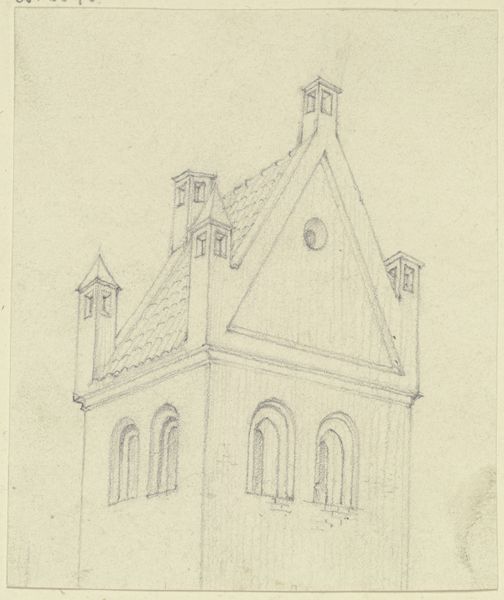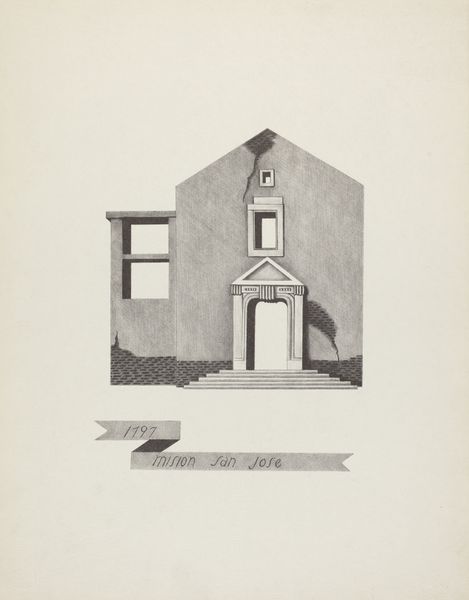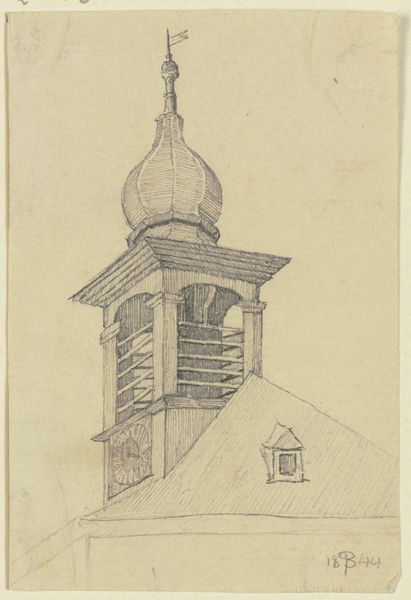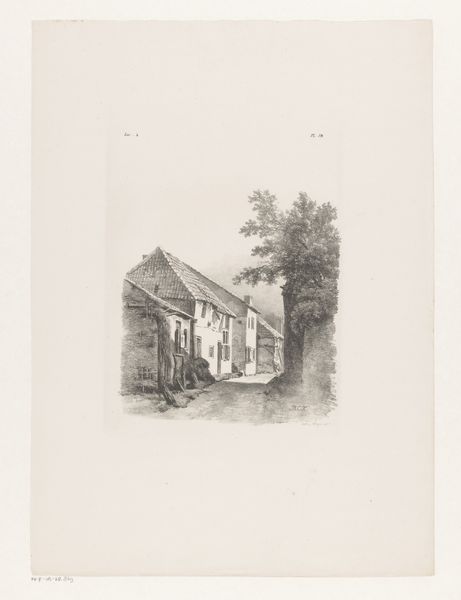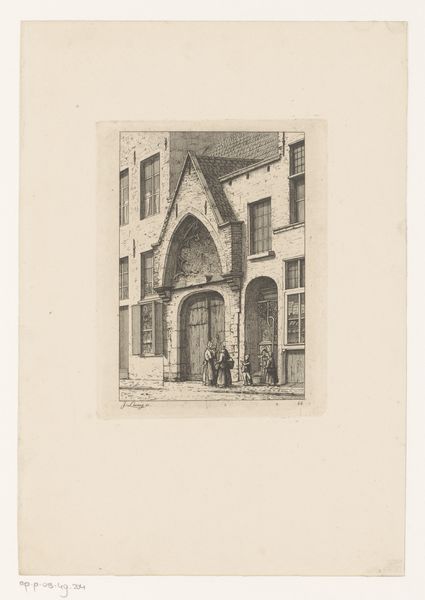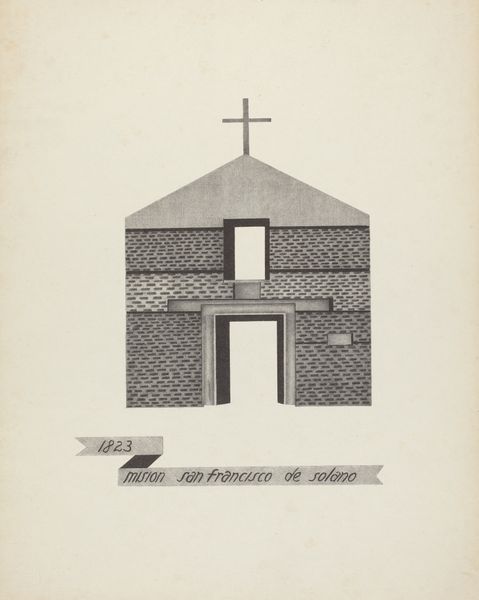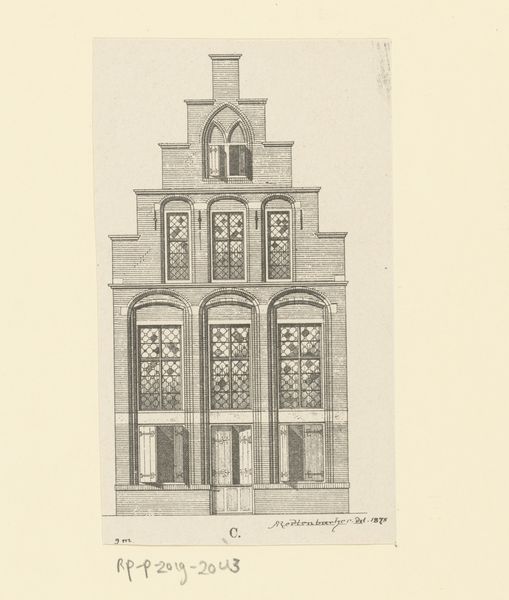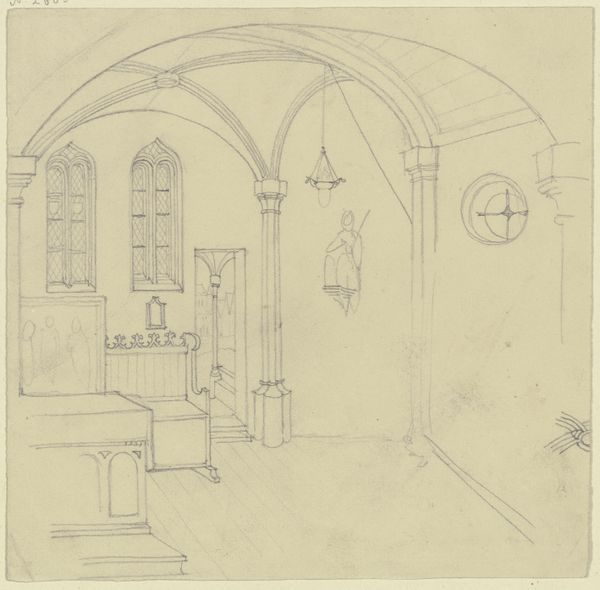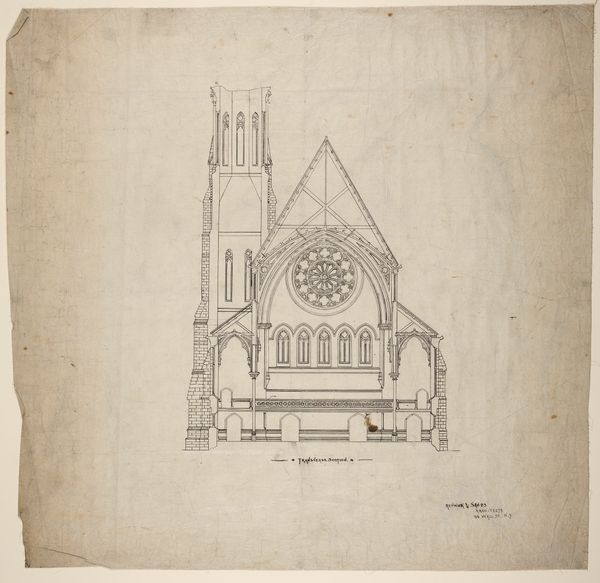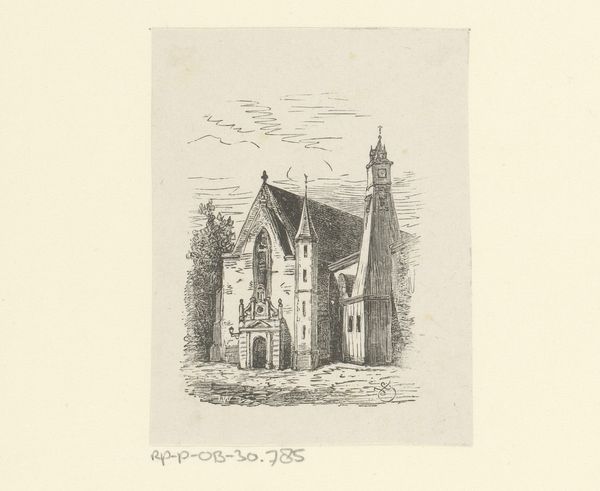
drawing, print, engraving, architecture
#
drawing
# print
#
cityscape
#
engraving
#
architecture
#
realism
Dimensions: height 318 mm, width 318 mm
Copyright: Rijks Museum: Open Domain
Curator: Here we have Jean Théodore Joseph Linnig’s “Oostgevel van kasteel Puttenberg in Beert," an engraving and drawing from 1852 depicting the east facade of Puttenberg Castle. Editor: It has a rather formal, austere quality. The pale color and precise lines almost render the castle as an abstract form rather than a lived-in space. It feels very controlled. Curator: Indeed. This piece is deeply embedded in the context of architectural representation during the 19th century. The interest in detailed, accurate depictions of buildings reflects the rising importance of architecture in shaping social spaces. Think about how power was expressed through these buildings, and consequently through their images. Editor: The symmetry is striking. The castle appears almost confrontational, centered and presented directly to the viewer. What socio-political message was this castle communicating and for whom? Was this an attempt to convey legitimacy through imposing visuals? Curator: Precisely! Consider also the history of Belgium at this time—a relatively newly formed nation seeking to define its identity. Visual representation of civic structure, whether drawing, print, or architecture was deeply tied to the concept of nation building. Linnig positions this particular architecture as an almost didactic archetype within the newly formed Belgian national identity. Editor: I'm curious about the use of realism in this case. Does this detailed depiction imply an endorsement of the values embodied by the castle, or does it simply serve as documentation? Is Linnig offering social commentary through his precision? Curator: It's a fascinating ambiguity. We have this facade rendered in a neutral manner, almost objective. Yet the very act of selecting this subject matter—a symbol of wealth and power—infuses the work with layers of political resonance whether consciously or not. The print and drawing’s realist aesthetic reflects and amplifies structures of socio-political status. Editor: The drawing really pulls you into contemplating how architecture acts not only as shelter but as a social actor as well. Curator: Indeed. These prints allow us a nuanced entry point to reflecting upon the interplay between the social, architectural, and the political forces at play in the mid-19th century.
Comments
No comments
Be the first to comment and join the conversation on the ultimate creative platform.
